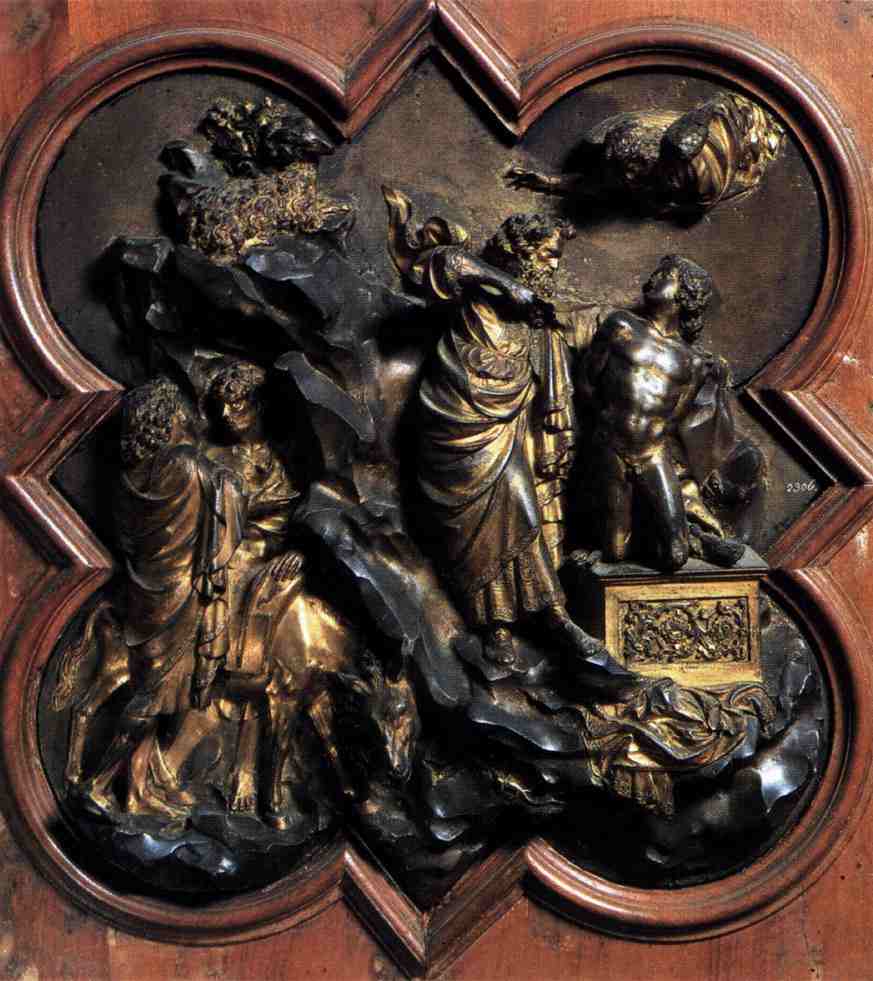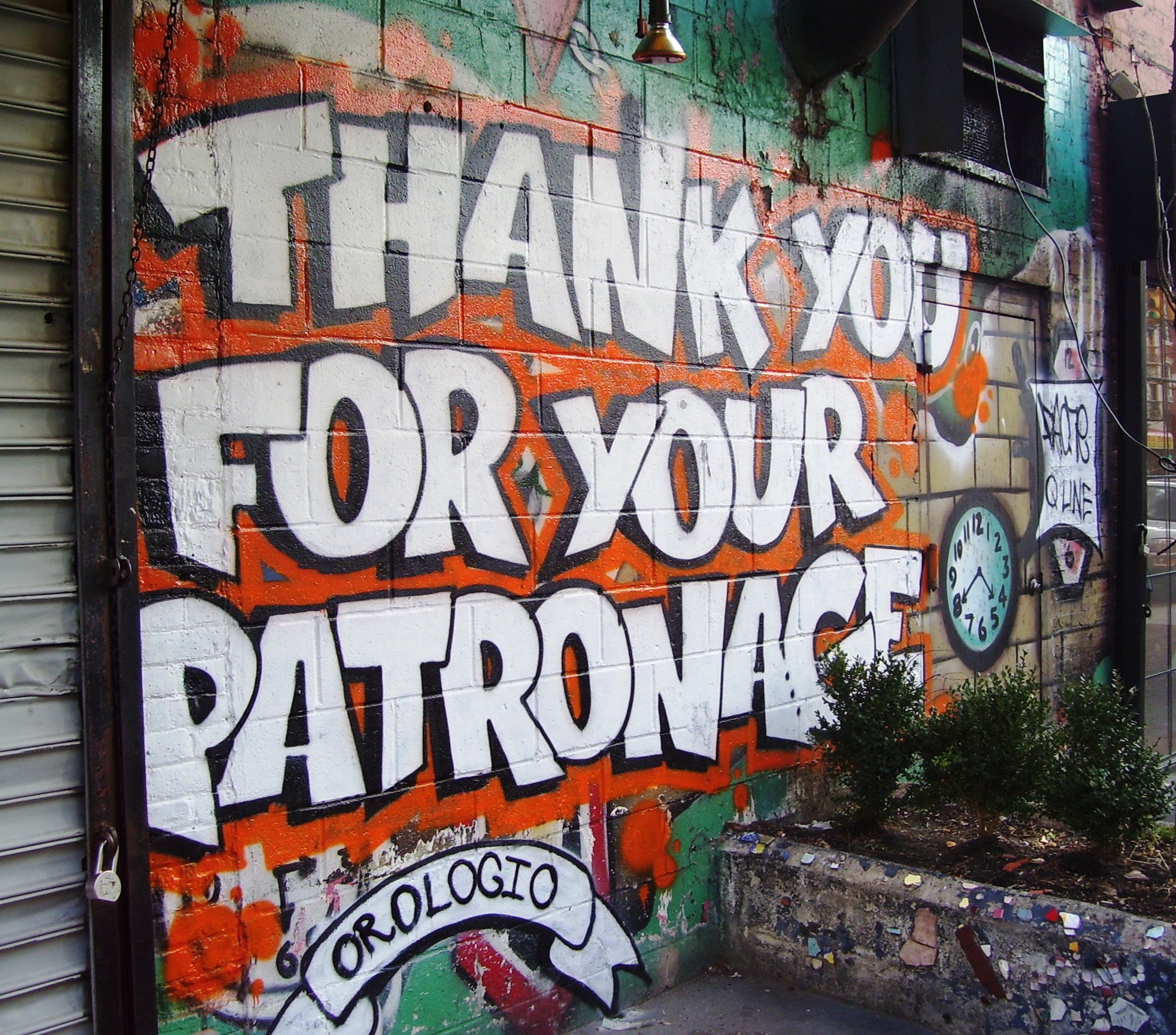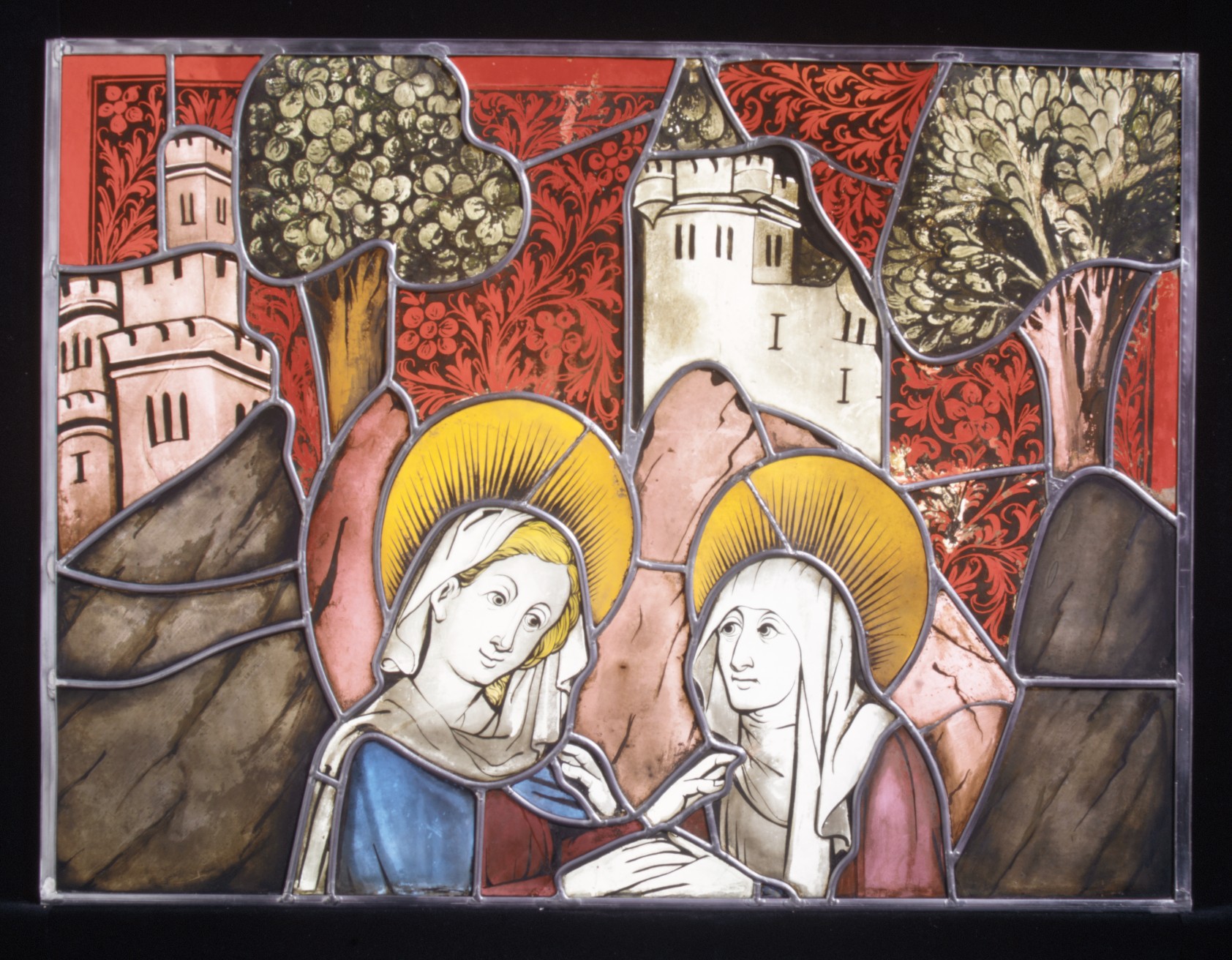|
Filippo Brunelleschi
Filippo di ser Brunellesco di Lippo Lapi (1377 – 15 April 1446), commonly known as Filippo Brunelleschi ( ; ) and also nicknamed Pippo by Leon Battista Alberti, was an Italian architect, designer, goldsmith and sculptor. He is considered to be a founding father of Renaissance architecture. He is recognized as the first modern engineer, planner, and sole construction supervisor. In 1421, Brunelleschi became the first person to receive a patent in the Western world. He is most famous for designing the dome of the Florence Cathedral, and for the mathematical technique of linear perspective in art which governed pictorial depictions of space until the late 19th century and influenced the rise of modern science. His accomplishments also include other architectural works, sculpture, mathematics, engineering, and ship design. Most surviving works can be found in Florence. Biography Early life Brunelleschi was born in Florence, Italy, in 1377. His father was Brunellesco di Lippo (bo ... [...More Info...] [...Related Items...] OR: [Wikipedia] [Google] [Baidu] [Amazon] |
Masaccio
Masaccio (, ; ; December 21, 1401 – summer 1428), born Tommaso di Ser Giovanni di Simone, was a Florentine artist who is regarded as the first great List of Italian painters, Italian painter of the Quattrocento period of the Italian Renaissance. According to Giorgio Vasari, Vasari, Masaccio was the best painter of his generation because of his skill at imitating nature, recreating lifelike figures and movements as well as a convincing sense of three-dimensionality. He employed nudes and foreshortenings in his figures. This had seldom been done before him.Vasari, Giorgio, "The Lives of the Artists" Translated by Julia Conaway Bondanella and Peter Bondanella, Oxford World Classics. The name Masaccio is a humorous version of Maso (short for Tommaso), meaning "clumsy" or "messy" Tom. The name may have been created to distinguish him from his principal collaborator, also called Maso, who came to be known as Masolino ("little/delicate Tom"). Despite his brief career, he had a pro ... [...More Info...] [...Related Items...] OR: [Wikipedia] [Google] [Baidu] [Amazon] |
Pistoia Cathedral
Pistoia Cathedral, or Cathedral of Saint Zeno ( or ''Cattedrale di San Zeno'') is the main religious building of Pistoia, Tuscany, central Italy, located in the ''Piazza del Duomo'' in the centre of the city. It is the seat of the Bishop of Pistoia and is dedicated to Saint Zeno of Verona. Most probably built in the 10th century, it has a facade in Romanesque style, inspired by other churches in Pistoia ( San Bartolomeo and San Jacopo). The interior has a nave and two side-aisles, with a presbytery and crypt. A restoration in 1952–1999 returned the church to its original lines. History It has been speculated that a smaller cathedral may have existed in Pistoia as early as the 5th century, as it already had a bishop at that time. The location of such a building is however unknown: possible sites are those of the current cathedral, of the Pieve di Sant'Andrea or of San Pier Maggiore. The first mention of a cathedral dates to 923. In 998 a diploma of Emperor Otto III refers ... [...More Info...] [...Related Items...] OR: [Wikipedia] [Google] [Baidu] [Amazon] |
Ancient Rome
In modern historiography, ancient Rome is the Roman people, Roman civilisation from the founding of Rome, founding of the Italian city of Rome in the 8th century BC to the Fall of the Western Roman Empire, collapse of the Western Roman Empire in the 5th century AD. It encompasses the Roman Kingdom (753–509 BC), the Roman Republic (50927 BC), and the Roman Empire (27 BC476 AD) until the fall of the western empire. Ancient Rome began as an Italic peoples, Italic settlement, traditionally dated to 753 BC, beside the River Tiber in the Italian peninsula. The settlement grew into the city and polity of Rome, and came to control its neighbours through a combination of treaties and military strength. It eventually controlled the Italian Peninsula, assimilating the Greece, Greek culture of southern Italy (Magna Graecia) and the Etruscans, Etruscan culture, and then became the dominant power in the Mediterranean region and parts of Europe. At its hei ... [...More Info...] [...Related Items...] OR: [Wikipedia] [Google] [Baidu] [Amazon] |
Ancient Greece
Ancient Greece () was a northeastern Mediterranean civilization, existing from the Greek Dark Ages of the 12th–9th centuries BC to the end of classical antiquity (), that comprised a loose collection of culturally and linguistically related city-states and communities. Prior to the Roman period, most of these regions were officially unified only once under the Kingdom of Macedon from 338 to 323 BC. In Western history, the era of classical antiquity was immediately followed by the Early Middle Ages and the Byzantine period. Three centuries after the decline of Mycenaean Greece during the Bronze Age collapse, Greek urban poleis began to form in the 8th century BC, ushering in the Archaic period and the colonization of the Mediterranean Basin. This was followed by the age of Classical Greece, from the Greco-Persian Wars to the death of Alexander the Great in 323 BC, and which included the Golden Age of Athens and the Peloponnesian War. The u ... [...More Info...] [...Related Items...] OR: [Wikipedia] [Google] [Baidu] [Amazon] |
Bargello
The Bargello, also known as the or ("Palace of the People"), is a former public building and police headquarters, later a prison, in Florence, Italy. Mostly built in the 13th century, since 1865 it has housed the , a national art museum. It is the primary national collection for Italian Renaissance sculpture, of which its collection of Florentine works is unequalled, and for the decorative arts of Florence, especially from the Renaissance period. There are also works from earlier and later periods. The medieval building is relatively well preserved, and includes the ''Cappella della Maddalena'' (Magdalen Chapel) with extensive but damaged frescos by Giotto, including a full-length portrait of Dante. In 2023 it was the 12th most visited museum in Italy, with 610,203 visitors; it generally lacks the long queues to enter the Uffizi. Name The word ''bargello'' appears to come from the late Latin ''bargillus'' (from Gothic ''bargi'' and German ''burg''), meaning "castle" or " ... [...More Info...] [...Related Items...] OR: [Wikipedia] [Google] [Baidu] [Amazon] |
North Doors Of The Florence Baptistery
The North Doors of the Florence Baptistery were made by Lorenzo Ghiberti between 1403 and 1424 and represent his first masterpiece, before the celebrated Gates of Paradise. The work is signed in the center, above the panels of the Nativity and the Adoration of the Magi: “OPVS LAUREN/TII•FLOREN/TINI.” After restoration in 2013-2015 (during which much of the original gilding was restored) the doors were displayed in the new Museo dell'Opera del Duomo (Florence), Museo dell'Opera del Duomo and replaced by a copy. History In 1401 the Arte di Calimala, responsible for the Baptistery of Saint John, announced a competition to create the north doors, sixty-five years after the completion of the first doors, the east (now south) doors by Andrea Pisano. Various artists, both Florentine and foreign, participated, including Jacopo della Quercia, from Siena, and the two young Florentine goldsmiths Lorenzo Ghiberti and Filippo Brunelleschi. They competed on the theme of the Binding of ... [...More Info...] [...Related Items...] OR: [Wikipedia] [Google] [Baidu] [Amazon] |
Patron
Patronage is the support, encouragement, privilege, or financial aid that an organization or individual bestows on another. In the history of art, art patronage refers to the support that princes, popes, and other wealthy and influential people have provided to artists such as musicians, painters, and sculptors. It can also refer to the right of bestowing offices or church benefices, the business given to a store by a regular customer, and the guardianship of saints. The word ''patron'' derives from the Latin ('patron'), one who gives benefits to his clients (see patronage in ancient Rome). In some countries, the term is used to describe political patronage or patronal politics, which is the use of state resources to reward individuals for their electoral support. Some patronage systems are legal, as in the Canadian tradition of the prime minister appointing senators and the heads of a number of commissions and agencies; in many cases, these appointments go to people who have ... [...More Info...] [...Related Items...] OR: [Wikipedia] [Google] [Baidu] [Amazon] |
Giovanni Di Bicci De' Medici
Giovanni di Bicci de' Medici ( – February 1429) was an Italian banker and founder of the Medici Bank. While other members of the Medici family, such as Chiarissimo di Giambuono de' Medici, who served in the Signoria of Florence in 1401, and Salvestro de' Medici, who was implicated in the Ciompi Revolt of 1378, are of historical interest, it was Giovanni's founding of the family bank that truly initiated the family's rise to power in Florence. He was the father of Cosimo de' Medici and of Lorenzo the Elder; grandfather of Piero di Cosimo de' Medici; great-grandfather of Lorenzo de' Medici (the Magnificent); and the great-great-great-grandfather of Cosimo I de' Medici, Grand Duke of Tuscany. Biography Giovanni di Bicci de' Medici was born in Florence, Italy. He was the son of Averardo de' Medici and Jacopa Spini. His father, Averardo died in 1363 with a respectable amount of wealth. This inheritance was divided among Giovanni and his four brothers, leaving Giovanni with ... [...More Info...] [...Related Items...] OR: [Wikipedia] [Google] [Baidu] [Amazon] |
Andrea Pisano
Andrea Pisano (Pontedera 12901348 Orvieto) also known as Andrea da Pontedera, was an Italian sculptor and architect. Biography Pisano initially learned the trade of a goldsmith. He later became an apprentice of Mino di Giovanni, about 1300, and worked with him on the sculpture for Santa Maria della Spina at Pisa and elsewhere. He produced his main works in Florence. It is assumed that Giotto was eventually more influential on his style than his earlier teacher. He produced the first (now on the southside) of the three bronze doors of the Baptistery in Florence. He worked on this major project between 1330–1336. The door consists of a number of small quatrefoil panels, the lower eight containing single figures of the Virtues, and the rest scenes from the life of John the Baptist. Andrea Pisano, while living in Florence, also produced many important works of marble sculpture, all of which show Giotto's influence. In 1340 he succeeded Giotto as Master of the Works of Florenc ... [...More Info...] [...Related Items...] OR: [Wikipedia] [Google] [Baidu] [Amazon] |
Quatrefoil
A quatrefoil (anciently caterfoil) is a decorative element consisting of a symmetrical shape which forms the overall outline of four partially overlapping circles of the same diameter. It is found in art, architecture, heraldry and traditional Christian symbolism. The word 'quatrefoil' means "four leaves", from the Latin , "four", plus , "leaf"; the term refers specifically to a four-leafed clover, but applies in general to four-lobed shapes in various contexts. In recent years, several luxury brands have attempted to fraudulently assert creative rights related to the symbol, which naturally predates any of those brands' creative development. A similar shape with three rings is called a trefoil, while a shape with five is a cinquefoil. History The quatrefoil enjoyed its peak popularity during the Gothic architecture, Gothic and Renaissance eras. It is most commonly found as tracery, mainly in Gothic architecture, where a quatrefoil often may be seen at the top of a Gothic arch, ... [...More Info...] [...Related Items...] OR: [Wikipedia] [Google] [Baidu] [Amazon] |
Gothic Art
Gothic art was a style of medieval art that developed in Northern France out of Romanesque art in the 12th century, led by the concurrent development of Gothic architecture. It spread to all of Western Europe, and much of Northern Europe, Northern, Southern Europe, Southern and Central Europe, never quite effacing more classical styles in Italy. In the late 14th century, the sophisticated court style of International Gothic developed, which continued to evolve until the late 15th century. In many areas, especially Germany, Late Gothic art continued well into the 16th century, before being subsumed into Renaissance art. Primary media in the Gothic period included sculpture, panel painting, stained glass, fresco and illuminated manuscripts. The easily recognisable shifts in architecture from Romanesque to Gothic, and Gothic to Renaissance styles, are typically used to define the periods in art in all media, although in many ways figurative art developed at a different pace. The ear ... [...More Info...] [...Related Items...] OR: [Wikipedia] [Google] [Baidu] [Amazon] |
Sacrifice Of Isaac
The Binding of Isaac (), or simply "The Binding" (), is a story from Book of Genesis#Patriarchal age (chapters 12–50), chapter 22 of the Book of Genesis in the Hebrew Bible. In the biblical narrative, God in Abrahamic religions, God orders Abraham to sacrifice his son Isaac on the mountain called Jehovah-jireh in the region of Moriah. As Abraham begins to comply, having bound Isaac to an altar, he is stopped by the Angel of the Lord; a ram appears and is slaughtered in Isaac's stead, as God commends Abraham's pious obedience to offer his son as a human sacrifice. Especially in art, the episode is often called the Sacrifice of Isaac, although in the end Isaac was not sacrificed. Various scholars suggest that the original story of Abraham and Isaac may have been of a completed human sacrifice, later altered by redactors to substitute a ram for Isaac, while some traditions, including certain Jewish and Christian interpretations, maintain that Isaac actually was sacrificed. In ad ... [...More Info...] [...Related Items...] OR: [Wikipedia] [Google] [Baidu] [Amazon] |








